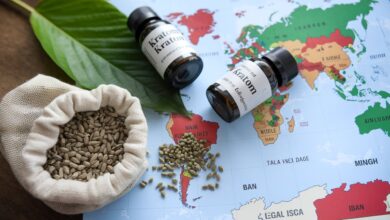The Ultimate Guide to Gelboodu: Exploring its Origins, Benefits, and Impact

Introduction
Gelboodu is a unique term that has captured the interest of various communities due to its cultural, medicinal, and culinary relevance. While it may not be widely known, it plays an important role in certain parts of the world, particularly in traditional medicine and culinary practices. Whether you are a health enthusiast, food lover, or someone interested in cultural exploration, understanding Gelboodu can open doors to various benefits and insights. This article will explore the origins, medicinal benefits, culinary uses, and growing popularity of Gelboodu, providing an in-depth look at how it impacts various aspects of our lives.
This guide will delve into Gelboodu’s significance from historical, health, and environmental perspectives. With the growing global interest in sustainable food sources and natural remedies, Gelboodu is becoming increasingly important in modern life. By the end of this article, you’ll have a comprehensive understanding of Gelboodu and its diverse applications, whether for improving health, enriching meals, or supporting sustainable practices.
What is Gelboodu?
Gelboodu is an ancient food and medicinal ingredient with roots in different parts of the world. It is often used in folk medicine and traditional cooking, yet its recognition has been limited outside specific regions. Gelboodu refers to a particular plant or product derived from it that is revered for its multi-functional properties. While its name might vary across cultures, its utility remains consistent. In many places, Gelboodu is highly regarded for its healing properties and ability to enhance a dish’s flavor profile.
Historically, Gelboodu has played a role in diverse cultural rituals and daily life. It has been passed down through generations in various communities, from small villages to bustling cities, each with a unique twist on its use. Some cultures incorporate Gelboodu into spiritual or health practices, seeing it as a symbol of vitality and wellness. The diverse ways Gelboodu is cultivated, harvested, and consumed reflect its adaptability and significance across different societies.
There are also different types of Gelboodu, depending on the geographical region. Some varieties are grown in tropical climates, while others thrive in temperate zones. Each variety has a slightly different set of uses, from being an essential element in medicine to a common ingredient in local cuisine. Understanding these regional differences is key to appreciating Gelboodu’s versatility.
Health and Medicinal Benefits of Gelboodu
Gelboodu is renowned for its wide array of health benefits, which have been recognized for centuries. Traditional medicine systems have utilized Gelboodu for its healing properties, especially in treating digestive issues, skin disorders, and inflammation. The active compounds in Gelboodu are believed to possess anti-inflammatory, antioxidant, and antimicrobial properties, making them an invaluable addition to holistic health practices.
Modern research has also started to back the claims of Gelboodu’s health benefits. Studies have found that Gelboodu may help boost the immune system, regulate blood sugar levels, and even reduce the risk of chronic diseases like heart disease and cancer. Its anti-inflammatory properties are particularly valuable in treating arthritis and joint pain, providing natural relief for those seeking pharmaceutical medication alternatives.
In addition to its physical health benefits, Gelboodu is praised for its positive effects on mental well-being. Due to its calming properties, it is often used in stress-relieving remedies. Consuming Gelboodu as part of a medicinal tea or supplement can help ease anxiety, improve sleep quality, and even enhance cognitive function. The plant’s rich array of nutrients, including vitamins and minerals, supports overall wellness, promoting better mood and energy levels.
Whether used in a therapeutic context or as part of a regular diet, Gelboodu is recognized as a natural remedy with far-reaching health benefits.
Gelboodu in Culinary Practices

In addition to its medicinal benefits, Gelboodu is a star ingredient in many traditional dishes. Its versatility in the kitchen has made it a valuable addition to a wide range of recipes, from savory stews to refreshing beverages. In some cultures, Gelboodu is added to food for its unique flavor profile, often described as earthy, slightly bitter, and aromatic. Its distinctive taste can complement a variety of ingredients, making it an ideal component for creative cooking.
Depending on the region’s culinary traditions, the plant is often used in sauces, soups, and desserts. In some cases, Gelboodu is ground into a powder or paste to incorporate into recipes; in others, it is used in its whole form. The plant’s ability to enhance the depth of flavors has made it a secret weapon for many chefs and home cooks alike.
Gelboodu is a key ingredient in specific regional cuisines and is central to traditional dishes. For example, in certain parts of Africa and Asia, it is incorporated into stews, where its flavor melds perfectly with meat or vegetables. In India, Gelboodu is sometimes used to prepare chutneys or added to rice dishes for extra zest. It has recently entered fusion cuisine, where its distinctive taste is paired with international flavors for innovative dishes.
Moreover, Gelboodu’s culinary uses go beyond just flavor. Its nutritional benefits are being integrated into modern dishes as part of the global health food movement. Superfood trends often highlight Gelboodu for its high antioxidant content, fiber, and other nutrients, making it an excellent choice for anyone looking to eat more healthily.
The Growing Popularity and Sustainability of Gelboodu
The growing demand for natural, sustainable products has fueled the popularity of Gelboodu. As people become more aware of their consumption choices’ environmental and health impacts, they turn to plants like Gelboodu that offer nutritional and medicinal benefits. Unlike many conventional crops, Gelboodu is relatively easy to cultivate with minimal environmental impact, making it an ideal choice for sustainable farming practices.
One key advantage of Gelboodu cultivation is its adaptability to different climates and soil types. It can be grown in tropical and temperate regions, making it a viable option for farmers in diverse parts of the world. This versatility ensures that Gelboodu can be produced sustainably and allows farmers to grow it alongside other crops, helping maintain soil health and reduce monoculture farming practices.
In addition to its environmental benefits, Gelboodu is also supporting local economies. In areas where Gelboodu farming is popular, it provides income opportunities for farmers and boosts the economy by meeting the rising demand for natural health products. Many communities are embracing Gelboodu as a valuable commodity that can bring economic and health benefits to the region.
As interest in sustainability grows, Gelboodu’s role in the future looks promising. It can be a key player in promoting sustainable agriculture while supporting global health trends. With its diverse applications in both health and cuisine, Gelboodu is poised to become an important part of the food and wellness industries.
Conclusion
Gelboodu is more than just a plant—it is a powerhouse of health benefits, culinary potential, and environmental sustainability. From its medicinal properties that promote overall well-being to its ability to enhance the flavor of a dish, Gelboodu proves its worth in many areas of life. Its growing popularity reflects a broader global shift toward natural, sustainable practices that benefit both people and the planet.
As more people discover Gelboodu’s versatility, it will likely gain even greater prominence in the health and culinary worlds. Whether seeking a natural remedy, exploring new flavors, or looking for ways to support sustainable agriculture, Gelboodu offers something for everyone. Its journey from traditional use to modern-day recognition demonstrates its resilience and adaptability to changing global needs.
Frequently Asked Questions (FAQs)
- What exactly is Gelboodu, and how is it used?
- Gelboodu is a plant used for its medicinal and culinary properties. It is known for its anti-inflammatory and antioxidant effects and is used in traditional dishes and health remedies.
- Can Gelboodu improve my health or treat specific conditions?
- Yes, Gelboodu has been shown to help with various health issues, including digestive problems, inflammation, and skin disorders, while supporting overall wellness.
- Is Gelboodu safe to consume in large amounts?
- While Gelboodu is generally considered safe, it is important to consume it in moderation. Excessive consumption could lead to digestive discomfort or other side effects.
- How is Gelboodu cultivated and harvested?
- Gelboodu is cultivated in tropical and temperate climates. It is typically harvested by hand, ensuring the plant is treated carefully to preserve its medicinal properties.
- What are some traditional recipes that include Gelboodu?
- Gelboodu is used in soups, stews, rice dishes, and desserts. It can be added to sauces or ground into a paste for flavor.
You May Also Read: https://topblogbuz.com/yahatai-kodosai/





